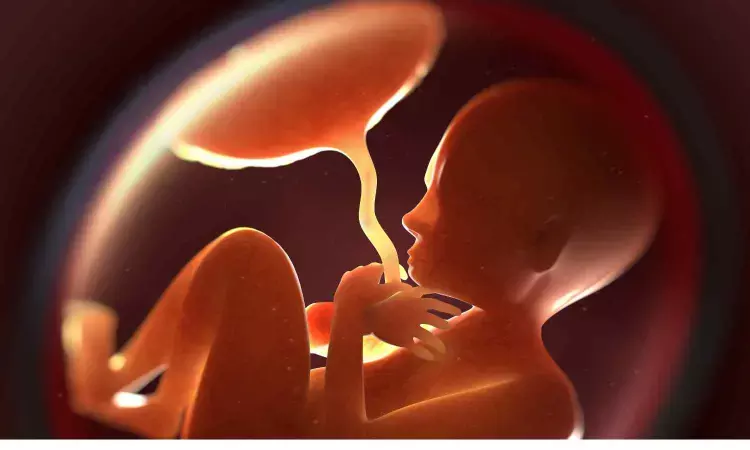- Home
- Medical news & Guidelines
- Anesthesiology
- Cardiology and CTVS
- Critical Care
- Dentistry
- Dermatology
- Diabetes and Endocrinology
- ENT
- Gastroenterology
- Medicine
- Nephrology
- Neurology
- Obstretics-Gynaecology
- Oncology
- Ophthalmology
- Orthopaedics
- Pediatrics-Neonatology
- Psychiatry
- Pulmonology
- Radiology
- Surgery
- Urology
- Laboratory Medicine
- Diet
- Nursing
- Paramedical
- Physiotherapy
- Health news
- Fact Check
- Bone Health Fact Check
- Brain Health Fact Check
- Cancer Related Fact Check
- Child Care Fact Check
- Dental and oral health fact check
- Diabetes and metabolic health fact check
- Diet and Nutrition Fact Check
- Eye and ENT Care Fact Check
- Fitness fact check
- Gut health fact check
- Heart health fact check
- Kidney health fact check
- Medical education fact check
- Men's health fact check
- Respiratory fact check
- Skin and hair care fact check
- Vaccine and Immunization fact check
- Women's health fact check
- AYUSH
- State News
- Andaman and Nicobar Islands
- Andhra Pradesh
- Arunachal Pradesh
- Assam
- Bihar
- Chandigarh
- Chattisgarh
- Dadra and Nagar Haveli
- Daman and Diu
- Delhi
- Goa
- Gujarat
- Haryana
- Himachal Pradesh
- Jammu & Kashmir
- Jharkhand
- Karnataka
- Kerala
- Ladakh
- Lakshadweep
- Madhya Pradesh
- Maharashtra
- Manipur
- Meghalaya
- Mizoram
- Nagaland
- Odisha
- Puducherry
- Punjab
- Rajasthan
- Sikkim
- Tamil Nadu
- Telangana
- Tripura
- Uttar Pradesh
- Uttrakhand
- West Bengal
- Medical Education
- Industry
Discarding placenta after birth tied to loss of valuable information, pathologists say

In an opinion article publishing September 18 in the Cell Press journal Trends in Molecular Medicine, physician-scientists argue that with most placentas discarded after birth, placental pathology is underutilized clinically, should be a routine part of obstetric and neonatal care, and also deserves more research attention.
“Placentas should not be considered a waste tissue,” says senior author Mana Parast, MD, PhD, professor of pathology at University of California San Diego School of Medicine. “They can teach us a lot about not just what went wrong in a pregnancy, but also inform about subsequent pregnancies for the health of the pregnant person and baby.”
The placenta is critical to the exchange of nutrients and waste products between the developing offspring and the pregnant person. If the placenta becomes diseased, it can impact the parent and offspring, both during pregnancy and later in life. At its most severe, placental pathology can cause stillbirths, and this is the medical scenario in which placentas are most often examined clinically. However, different types of placental pathology are also associated with small birth size and neurological issues in infants, and with hypertension (preeclampsia) and other cardiovascular issues in the parent.
“Placental pathology can potentially identify not just the cause of an adverse outcome in the baby, but also insight into why something happened in the mom, and what that means for their health in the future,” says Parast, perinatal pathologist and director of the perinatal pathology service at UC San Diego Health. “For example, we're learning that a particular lesion in the placenta called decidual arteriopathy is potentially a marker for future cardiovascular disease in women, and other lesions can tell you whether preeclampsia or stillbirth is likely to recur in subsequent pregnancies.”
Examining placentas of preterm babies can also inform their immediate care by helping to detect fungal infections that would otherwise take days to identify.
“Preterm babies that go to the neonatal intensive care unit usually receive antimicrobial antibiotics to prevent bacterial infections that might have taken hold, because premature babies don't have a very good immune system, but they're not given antifungals,” says Parast. “Culturing for fungal infections in blood takes a few days, but if we quickly examine the placentas of preterm babies for signs of fungal infection, we can immediately alert the NICU team to add an anti-fungal to the regimen.”
Despite the wealth of information that they provide, placentas are underutilized clinically. To start to remedy this, the researchers suggest that clinicians begin by incorporating placental pathology into the care for complicated pregnancies.
“There are hospitals in the United States where all placentas are examined by the pathologists, even for uncomplicated pregnancies, and sometimes that evaluation prompts additional examination, but that definitely takes a lot more resources,” says Parast.
Though the implications of some patterns of placental pathology are known, others remain unclear, and very little is known about why these placental issues occur. For these reasons, the researchers say that placental research deserves more research funding and needs to be incorporated into prospective clinical trials.
“Incorporating placental evaluations into ongoing clinical trials will provide even more information about how different placental lesions relate to the patients’ current and future health, and the underlying pathophysiology behind these lesions,” says Parast. “If placental pathology isn't incorporated into these trials, it's kind of like if a cancer trial was conducted without pathology-they would just be driving blind.”
Reference:
Drucilla Roberts, Omonigho Aisagbonhi, Mana M. Parast, Incorporating placental pathology into clinical care and research, Trends in Molecular Medicine, DOI:10.1016/j.molmed.2024.08.002.
Dr Kamal Kant Kohli-MBBS, DTCD- a chest specialist with more than 30 years of practice and a flair for writing clinical articles, Dr Kamal Kant Kohli joined Medical Dialogues as a Chief Editor of Medical News. Besides writing articles, as an editor, he proofreads and verifies all the medical content published on Medical Dialogues including those coming from journals, studies,medical conferences,guidelines etc. Email: drkohli@medicaldialogues.in. Contact no. 011-43720751


